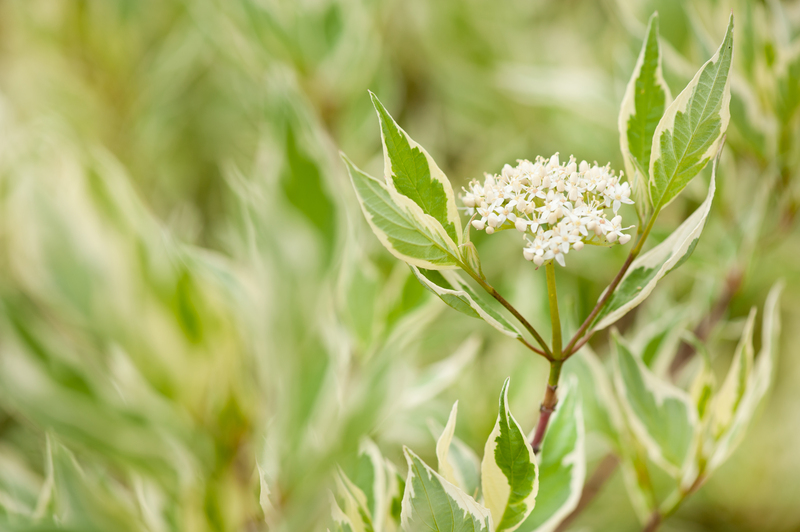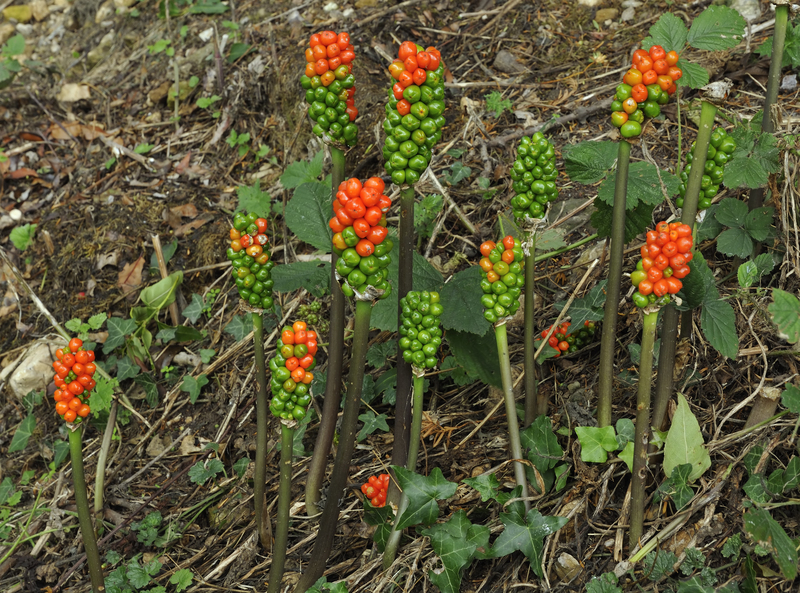How to Build a Sustainable and Flourishing Herb Garden
Posted on 13/06/2025
How to Build a Sustainable and Flourishing Herb Garden
Are you dreaming of stepping outside your door to snip fresh basil, mint, or rosemary for your next meal? A sustainable and flourishing herb garden not only elevates your cooking but also benefits the environment while providing a therapeutic hobby. This comprehensive guide will teach you step-by-step how to build an eco-friendly, abundant herb oasis at home—whether you have a sprawling backyard or a tiny balcony.
Why Choose a Sustainable Herb Garden?
A sustainable herb garden uses organic, low-impact methods that preserve natural resources, promote biodiversity, and minimize waste. You'll enjoy:
- Healthier herbs without chemical residues
- Support for pollinators and beneficial wildlife
- Reduced grocery bills as your garden provides fresh flavor year-round
- Lower carbon footprint through hyper-local food production
- Personal satisfaction from nurturing a living ecosystem

Planning Your Flourishing Herb Garden
Careful planning is the key to a flourishing, long-lasting herb garden. Consider these essential factors before you start planting:
1. Choose the Right Location
- Sunlight: Most culinary herbs thrive with at least 6 hours of sunlight daily.
- Soil: Well-draining, organically rich soils encourage vigorous herb growth.
- Accessibility: Plant herbs near your kitchen for easy harvesting.
- Microclimate: Observe wind, shade, and moisture, which can affect your garden's sustainability.
2. Select Sustainable Growing Methods
- Raised beds promote good drainage and soil health.
- Pots or containers work wonderfully for patios and balconies.
- For a perennial herb garden, integrate with existing landscaping to maximize space and resources.
3. Choose Herbs Suited to Your Climate
Not all herbs flourish everywhere. Choose varieties adapted to your local weather.
- Hardy perennials: Rosemary, oregano, thyme, sage
- Tender annuals: Basil, cilantro, dill, parsley
- Moisture-loving: Mint, chives, lemon balm
- Heat-tolerant: Lavender, marjoram, savory
How to Start Your Sustainable Herb Garden
Step 1: Prepare the Soil
Soil is the foundation of a flourishing garden. Rich, living soil ensures that your herbs have abundant nutrients naturally.
- Test your soil: Check pH (6-7 is ideal for most herbs).
- Add organic matter: Compost, aged manure, or worm castings enrich the soil structure.
- Avoid synthetic fertilizers—opt for sustainable, plant-based amendments.
- Mulch with straw or leaves to conserve water, prevent weeds, and feed soil life.
Step 2: Start Herbs from Seeds or Seedlings
You can start your herb garden from seeds or by purchasing young plants (seedlings).
- Seeds: Cost-effective and provide more variety. Sow directly outdoors after frost or start indoors earlier.
- Seedlings: Quicker to establish and perfect for impatient gardeners.
- Choose organic, non-GMO seeds for a truly sustainable herb garden.
Step 3: Plant with Pollinators in Mind
Herbs like oregano, lavender, or chives produce flowers that attract bees and butterflies. Interplant these to encourage beneficial insects and help the environment.
- Leave some herbs, like basil or dill, to flower for pollinators.
- Avoid pesticides that harm helpful insects.
Step 4: Water Wisely
Environmentally conscious gardeners use water efficiently:
- Install drip irrigation or soaker hoses to minimize evaporation.
- Water early in the day to reduce fungal issues.
- Group herbs by water needs (e.g., put Mediterranean herbs together).
- Collect rainwater in barrels for a free, sustainable water source.
Tips for Ongoing Sustainability and Abundant Harvests
Feed Your Soil, Not Just Your Plants
A sustainable and flourishing herb garden depends on a thriving soil ecosystem.
- Add compost each season to replenish nutrients and encourage beneficial microbes.
- Practice crop rotation if you grow annual and perennial herbs together.
- Let some plant material decompose in the garden for natural mulch and soil improvement.
Encourage Biodiversity
- Mix a variety of herbs and companion flowers to attract many pollinators and keep pests in check.
- Install an insect hotel or leave small brush piles to support garden helpers.
Pest and Disease Control the Eco-Friendly Way
In a balanced ecosystem, pests rarely become overwhelming. If they do:
- Hand-pick pests or use a gentle spray of water.
- Plant trap crops or strong-smelling herbs (like basil or garlic) to deter intruders.
- Promote predatory insects like ladybugs, lacewings, and birds.
- Remove and compost diseased leaves promptly.
- Apply neem oil or soap sprays for tough infestations, always minimizing harm to pollinators.
Smart Harvesting Techniques
- Pinch or cut back herbs regularly to encourage bushier growth and prevent flowering too soon.
- Never harvest more than 1/3 of the plant at a time for perennials.
- Use sharp, clean scissors to prevent infections and promote healthy regrowth.
The Best Herbs for a Sustainable Garden
Wondering which herbs to prioritize? Here's a list of low-maintenance and productive options for your flourishing herb garden:
- Basil: Annual; loves heat; perfect for pesto and salads.
- Parsley: Biennial; packed with vitamins; great in soups.
- Mint: Perennial; keep contained; amazing for teas and desserts.
- Rosemary: Very drought-tolerant perennial; grows into a fragrant shrub.
- Sage: Hardy perennial; ideal for autumn dishes.
- Thyme: Versatile, low-growing, flavors many cuisines.
- Oregano: Spreads easily; essential for Italian and Greek dishes.
- Chives: Mild onion flavor; lovely flowers attract bees.
Herb Garden Design Ideas
A sustainable and thriving herb garden can be not just functional, but beautiful. Explore these garden design inspirations:
Herb Spiral
A spiral mound maximizes space and microclimates. Plant drought-tolerant herbs at the top, moisture lovers at the bottom.
Container Herb Garden
Perfect for patios or balconies. Mix and match container sizes and colors.
- Repurpose old buckets or wooden crates for an eco-friendly touch.
- Ensure pots have drainage holes to prevent root rot.
Traditional In-Ground Bed
- Border herbs with stones or wood for neat edges.
- Integrate herbs throughout vegetable or flower beds for natural pest control.
Vertical Herb Wall
Utilize pallet frames, hanging pockets, or wall planters to grow herbs vertically. This method saves space and adds lush beauty to fences or walls.
Using and Preserving Your Garden's Bounty
A sustainable, flourishing garden provides far more herbs than you can eat fresh.
- Drying: Hang bunches in a dry, airy place, then store leaves in airtight containers for year-round flavor.
- Freezing: Chop herbs and freeze in ice cube trays with water or oil for easy use in soups and sautés.
- Infusing: Make herb oils, vinegars, or teas for gourmet gifts.
- Medicinal uses: Many herbs bring valuable health benefits—explore their uses safely and responsibly!

Common Challenges and Sustainable Solutions
Weeds
- Mulch heavily and hand-weed as needed to keep competition low.
Poor Growth
- Amend the soil with compost, check sunlight, and adjust watering habits.
Herbs Going to Seed Too Early
- Pinch off flower buds on basil, cilantro, and chives to prolong leaf harvests.
Indoor Herb Garden Issues
- Insufficient light is the usual culprit—consider installing a grow light.
- Ensure pots drain freely to avoid soggy roots.
Conclusion: Cultivating Your Sustainable & Flourishing Herb Garden
With a bit of planning, ongoing care, and respect for natural processes, you'll enjoy a sustainable and flourishing herb garden that provides fresh, fragrant ingredients for your kitchen, beauty for your home, and critical support for the local ecosystem. The rewards of nurturing your own herbs go far beyond the dinner plate—gardening offers relaxation, learning, and a profound connection to nature.
Remember: The best gardens are those that evolve with the seasons and your own experience. Start small, experiment with different varieties, and celebrate the journey as your sustainable herb garden grows ever more abundant!

